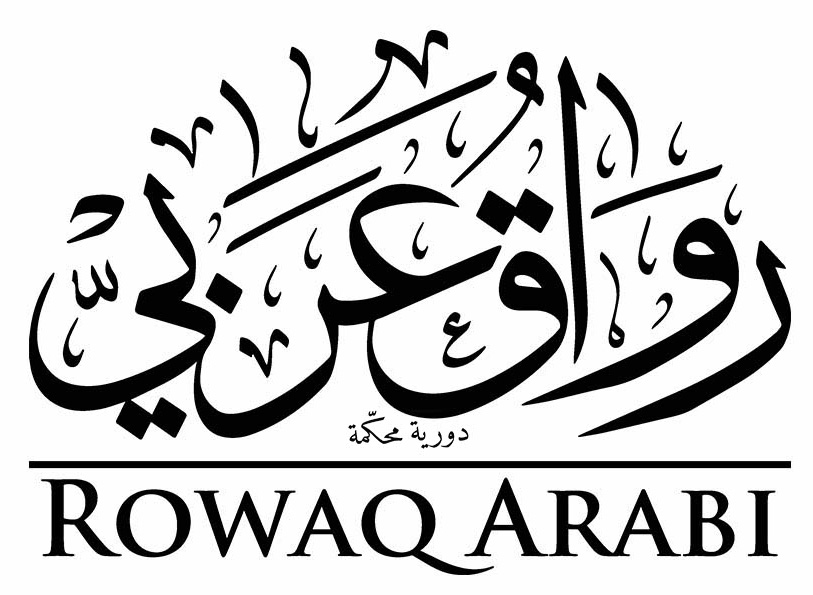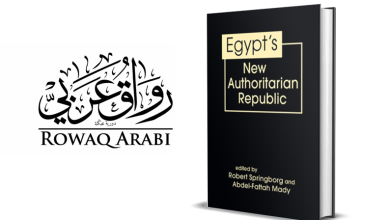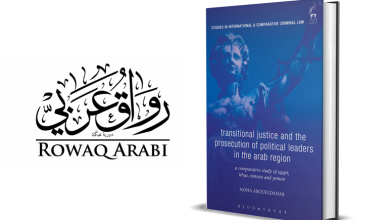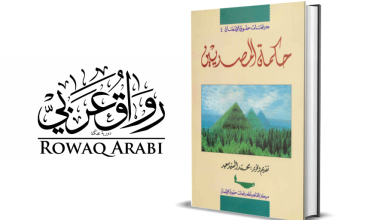Book Review: ‘Righting Wrongs’ by Kenneth Roth

Citation: Hicks, Neil. 2025. “Book Review: ‘Righting Wrongs’ by Kenneth Roth.” Rowaq Arabi 30 (2): 22-25, https://doi.org/10.53833/QTIM4906.
Title: Righting Wrongs: Three Decades on the Front Lines Battling Abusive Governments
Author: Kenneth Roth
Publisher: Alfred A. Knopf (New York)
Edition: 1st
Year of Publication: 2025
E-Book ISBN: 9780593801338
‘Righting Wrongs’ is an awkward amalgamation of a book. It is at once the story of how Kenneth Roth, Executive Director of Human Rights Watch (HRW) between 1993 and 2022, built the second largest human rights organisation in the world, and an extensive – if cursory- history of the major human rights crises of the last thirty years while also being a memoir, and a manifesto for a particular way of advancing human rights, which Roth often goes to great lengths to defend. Although the author claims it to be a ‘handbook for action’ in the preface, the book is hardly that for most people; unless you happen to be a Davos regular on first-name terms with presidents, prime ministers, and secretaries general of the UN, and able to persuade an obliging billionaire to give you a $100 million to build your project.
In a rare moment of self-deprecation, Roth acknowledges that he was ‘born at the right time’ to build a notable career in the human rights movement. If not there at the creation, he was there at the moment when the cause of human rights was making great advances as a salient factor in international affairs. Jimmy Carter, US President from 1977-1981, stated that he would put human rights at the centre of US foreign policy. This verbal commitment has been a constant of US foreign policy for the last four decades, until the second Trump administration recently took a chainsaw to it in pursuit of quite different objectives. HRW may lack the global reach of Amnesty International, with its national sections with thousands of members in scores of countries, but it has long been the most influential human rights organisation, and the most visible in the media, in the United States at a time when that country was building a rules-based international order in which liberal democracy grounded in the rule of law and human rights was a hallowed principle—even if the United States itself often breached rather than observed it. First it was a rallying cry in the Cold War, then having vanquished the Soviet Union, it became an organising principle for a US-led global order that roughly coincided with Roth’s career with HRW.
Roth came to HRW as Deputy Director on the cusp of the dawn of the United States’ unipolar moment of global primacy after the collapse of the Soviet Union. Dissidents, human rights organisations and popular movements inspired by the ideals of freedom and democracy, especially in the Warsaw Pact countries of central and eastern Europe, had presented a compelling example of the power of human rights to overcome repression even when faced by a superpower. Helsinki Watch, and HRW after the 1988 merger of regional watch committees, certainly played its part in reporting on struggles behind the Iron Curtain and mobilising international support for them. Not surprisingly, Roth and his colleagues were eager to build on the momentum of this moment.
Roth attributes the rapid growth of HRW, and the global human rights movement, to modern communications technology. While that no doubt helped, it overlooks the fact that the HRW method and approach to human rights promotion was very much in tune with the prevailing liberal internationalist ideology of the dominant global power of final decade of the twentieth century.
Roth’s failure to acknowledge the advantages that accrued to HRW from being in the right place at the right time suggests a certain blinkered rigidity in his approach to human rights promotion. Roth’s experience was that objective fact-finding coupled with skilful presentation and a sophisticated media operation would expose the perpetrators of serious violations of human rights to public shaming that could be translated into significant pressure for change. There is no doubt that these methods have worked in the past, and were arguably at their peak of effectiveness during the first decade of Roth’s leadership of HRW. Roth deserves enormous credit for his drive and tenacity and his ability to attract and retain talented staff that made HRW a powerhouse on the global stage. Nevertheless, it is also undeniable that human rights progress has stalled and even regressed in many places, not least in Russia, and the traditional methods that HRW was able to wield so ably in the 1980s and 1990s have been delivering diminishing returns, in some cases even becoming counterproductive. These negative trends are largely overlooked by Roth.
Roth is unwilling to engage with the trenchant critiques of the naming and shaming methodology, and of the human rights movement’s reliance on political pressure from governments aligned with the United States that characterises the HRW approach. Some of these critics may have objectives that go beyond what Roth would consider to be the proper concerns of human rights organisations, but others, like Jack Snyder or Mark Malloch Brown, are on the side of human rights and yet their ideas are dismissed in a few words by Roth.
Roth believes that he can refute these criticisms through recounting his and HRW’s exploits of bringing damning evidence of serious violations to the attention of powerful world leaders and persuading them to use their influence to end or at least lessen these violations. These anecdotes become strained. It is hard, for example, for the human rights movement to take any credit for the course of events in Syria between 2012 and 2025. However, Roth chooses to open his book with the claim that HRW’s efforts contributed to ‘mitigating human rights violations’ in Idlib. Presumably, by taking the hard case of Bashar al-Assad, he is seeking to prove his assertion that ‘abusive governments continue to care about shaming,’ but the evidence for that is increasingly thin.
Vladimir Putin is not shamed by Western objections to his persistent attacks on Ukrainian civilians. In fact, he is able to fit such criticisms into his narrative that he is the target of hypocritical attacks from a malevolent West determined to thwart Russia’s legitimate actions that he describes as self-defence. The same can be said of authoritarian leaders in many parts of the world, Xi is rebuilding China’s past greatness in the face of a hostile West, Sisi is standing on the frontline of a war against terrorism to protect his own people and to the benefit of an insufficiently grateful West.
Roth claims that even if shaming is not always able to bring an end to severe violations, it can increase the cost for the violators and thereby mitigate violations. But this overlooks the reality that shaming is double-edged and authoritarian governments have become increasingly adept at using Western criticism to build their support at home and in much of the rest of the world. Too often for groups like HRW, the efficacy of its shaming methodology depends on the credibility of Western governments, especially the United States, as defenders of the rules-based international order. In many parts of the world this has been a dubious proposition for decades, but such credibility as the West had enjoyed has been eroded by human rights disasters like the US-led global war on terrorism, US military misadventures in Afghanistan and Iraq, increasing Western hostility to refugees and migrants despite a burgeoning global migration crisis, and double standards, especially in its complicity in Israeli war crimes and crimes against humanity.
A book that devotes so much attention to the methodology of shaming might have reasonably been expected to examine more deeply some of its apparent contradictions, but Roth does not. This insouciance is apparent in Roth not taking into consideration the inherent tensions of combining human rights work with policy advocacy. Roth frequently recounts his meetings with world leaders and is proud that HRW was able to speak with policy makers on an equal footing, or even as the party with superior expertise. This may well be true. Roth himself and many of his HRW colleagues are great authorities on their areas of expertise. Nevertheless, Roth seems to have entertained few doubts that he and HRW could operate in the contingent world of policy, and inevitably politics, while adhering a purely objective fact-based approach. Western leaders who may have previously presented themselves as human rights defenders invariably find themselves speaking in riddles about ‘principled pragmatism’ or ‘progressive realism’ when facing the realities of exercising leadership in a world of imperfect actors some of whom are too powerful, or too useful, to offend.
It is hard to criticise Roth’s achievements as a fundraiser, building HRW’s annual budget from $7 million in 1993 to over $100 million in 2023. He describes how HRW was able to develop support committees of very well-heeled donors in twenty-three cities around the world and how he appreciated working together with these high-net-worth individuals to support HRW’s increasingly wide-ranging and high-profile activities. Roth does ask the question, ‘did our donor base make us too conservative?’ but he denies that this happened, with little further discussion. He seems to acknowledge the dissonance in moving between the worlds of wealth and privilege, that will be familiar to anyone who has spent time around major US based international human rights organisations, and that of repression and human rights abuse. However, he does not explore the possibly negative connotations of being identified with and supported by an increasingly criticised plutocracy.
There is a history of revolving doors between the higher levels of HRW staff and positions in the U.S. government. The same thing happens in many U.S. based human rights organisations, but Roth has nothing to say about the inevitable and not incorrect perception, beyond the Washington bubble, that major U.S. based human rights organisations are close to, or even part of, what President Obama used to call ‘the blob,’ the bi-partisan foreign policy establishment that traffics in received wisdom and occupies influential positions in successive administrations. This may not be a problem if U.S. foreign policy was a story of repeated successes, especially in Roth’s case in the field of human rights, but unfortunately for the last twenty-five years the opposite is generally true. These compounding failures have surely empowered and even enabled Trump and his acolytes to take dangerous steps to dismantle the rules-based international order and multilateral cooperation in human rights and other areas, with some degree of support or acquiescence from a critical mass of the American people and eager approbation from global authoritarians, whom Trump recognises as his best friends. It is a cruel irony that Roth’s tale of building a mighty human rights organisation has been published just as the Trump administration is busily tearing down everything HRW ever stood for and achieved.
‘Righting Wrongs’ reads like a nostalgic history of a past golden age of human rights. In that way it may be seen as a memoir of happier times. Because of Roth’s unwillingness to either take into account the human rights reversals and failures of recent decades, or to engage with the many challenges now confronting the multilateral human rights system, it is less useful than it might have been as a guide for future action.
Read this post in: العربية





